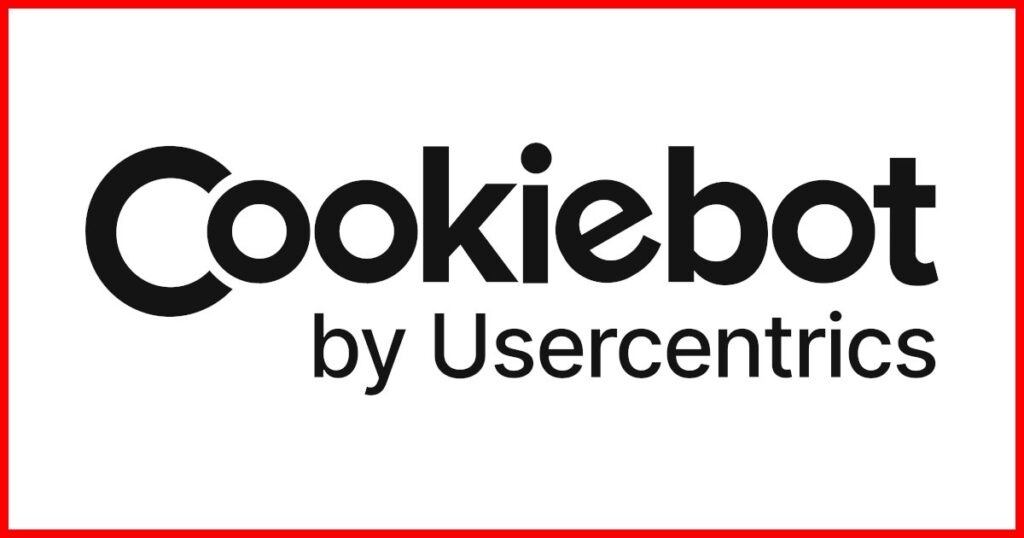The Cookiebot is perhaps the most widespread Consent Management Platform (CMP). In Greece, it is almost synonymous with Cookie Consent. Besides GDPR, it supports many other policies.
It offers a Free plan only for very small sites: 50 subpages, with limited features. Good detection and classification of cookies (cookie manager). The free plan lacks statistics and scheduled cookie scans (only 1 automated monthly scan).
Refer to the Compare plans page.
It currently does not have an affiliate program.
Cookiebot is a Google Certified CMP Partner.
The installation will be done using Google Consent Mode (GCM), which is the most widespread technique. Note that there is an alternative (stricter) technique using blocking triggers.
If you use Google Advertising, Google Consent Mode v2 is mandatory for European traffic, from March 2024. Details here.
Popularity
The following chart from Google Trends is indicative
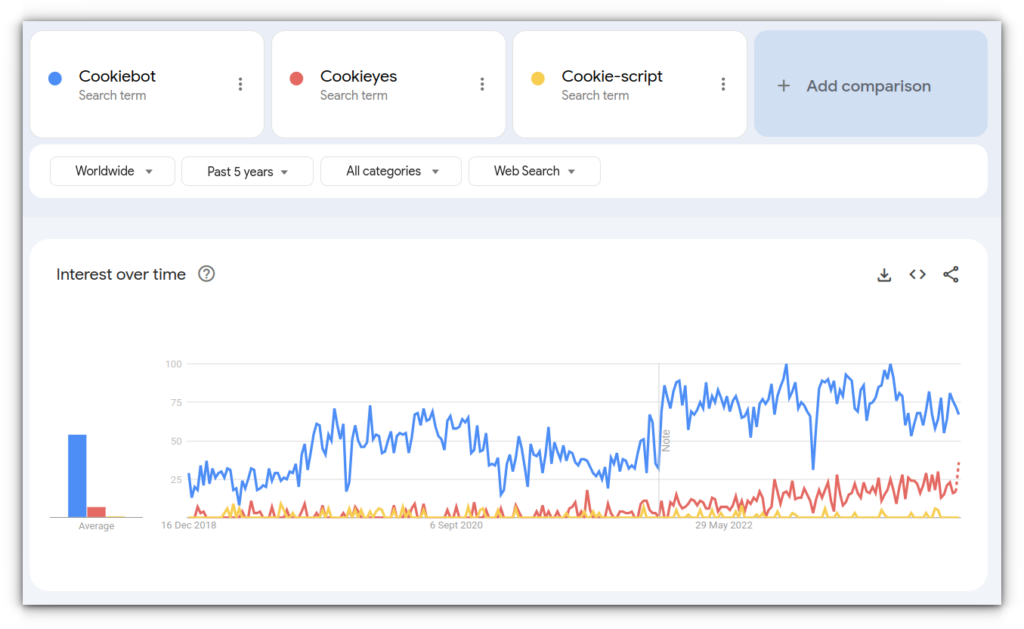
Possibly, the solution from OneTrust might be more popular (Google trends). Also, perhaps iubenda has a similar market share to Cookiebot (Google trends).
In Greece, most large portals use Quantcast’s CMP (Quantcast Choice) which has now been acquired by InMobi and answers as InMobi Choice. However, Cookiebot seems to be the most prevalent CMP.
Basic Installation
The basic installation is described here and includes using a template from the Community Library (Cookiebot CMP) of Google Tag Manager.
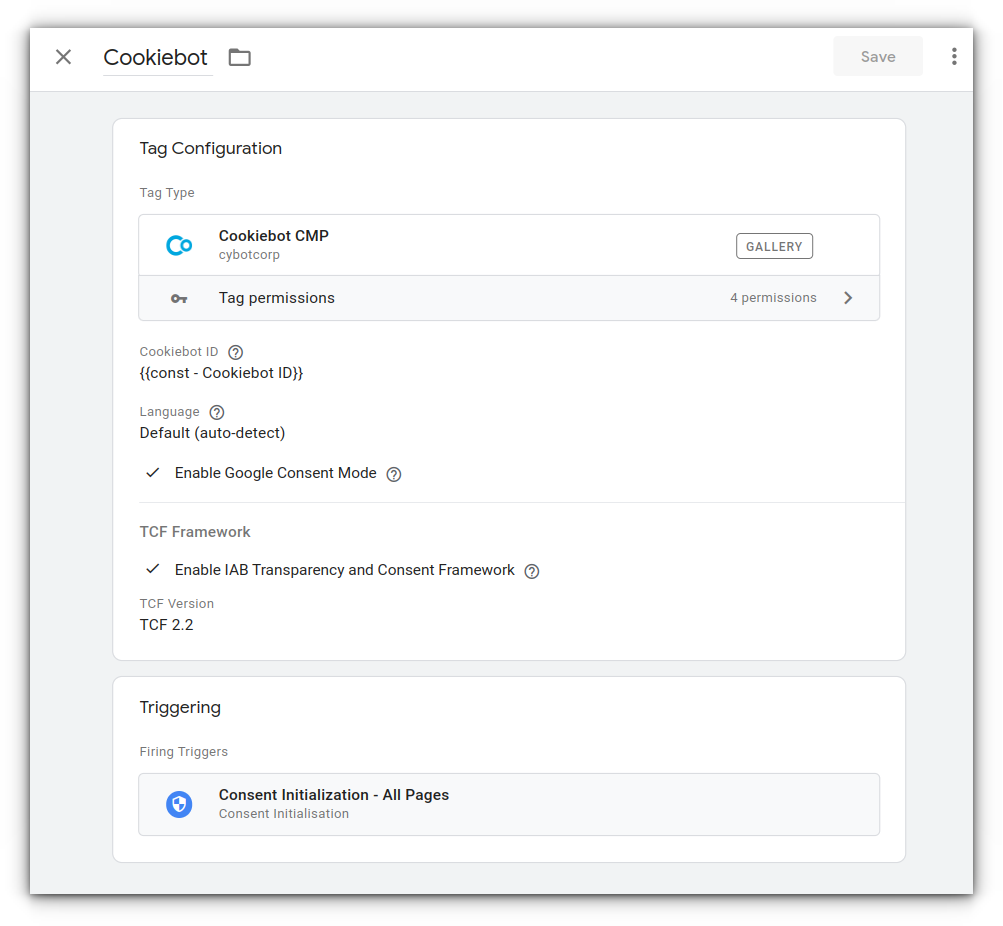
After the basic installation, you may notice during the GTM PREVIEW process a new event being pushed to the dataLayer, the cookie_consent_update.
Google Consent Mode
Then, you should enable Consent Overview from the container settings (if not already activated).
Note that only Google Tags (GA4, Google Ads, Conversion Linker, and Floodlight) have built-in Consent Mode. For other tags (e.g., Facebook Pixel, Linkedin Insight, TikTok pixel, etc.), the level at which they will be fired or not must be defined.
Official video
Cookie Consent Update Trigger
One might expect that these settings are enough. However, an additional trigger will be needed for everything to work correctly when the user’s consent changes.
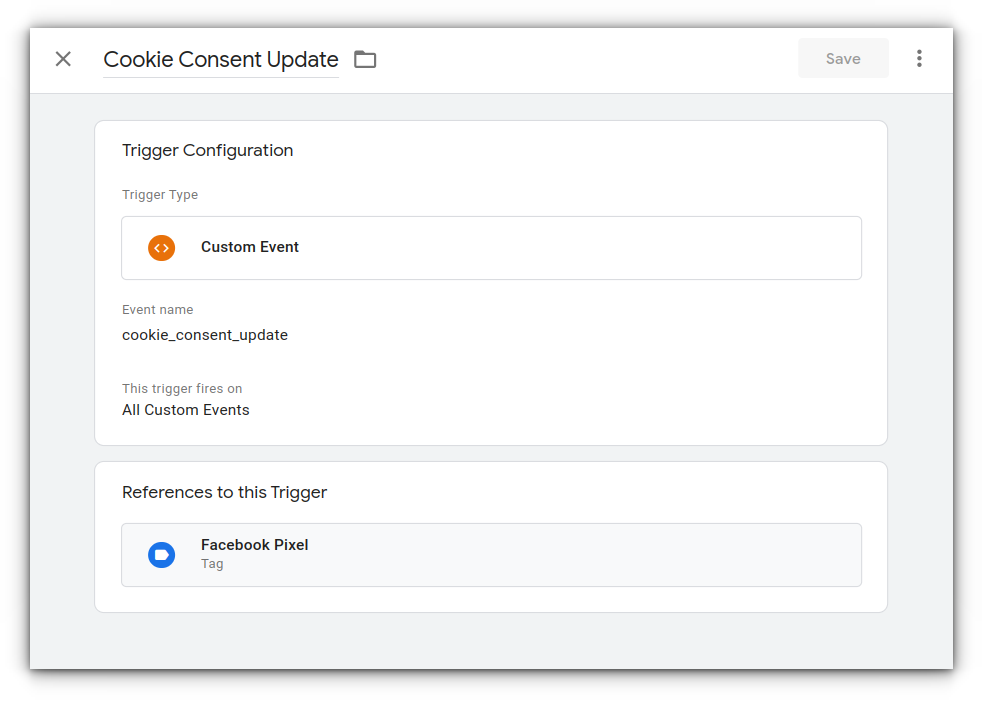
IAB TCF v2.2 Compliance with Cookiebot
Cookiebot is now compatible with the Transparency & Consent Framework (TCF) TCF2.2 (replacing TCF2.0) according to IAB
This change is significant for Ad Publishers:
If you do not migrate by the required deadline of November 20, 2023, any TC strings obtained under TCF v2.0 after that date will be considered invalid. This could adversely affect your agreements with advertisers, potentially resulting in a decrease in your ad revenues.
Source
Available in paid plans.
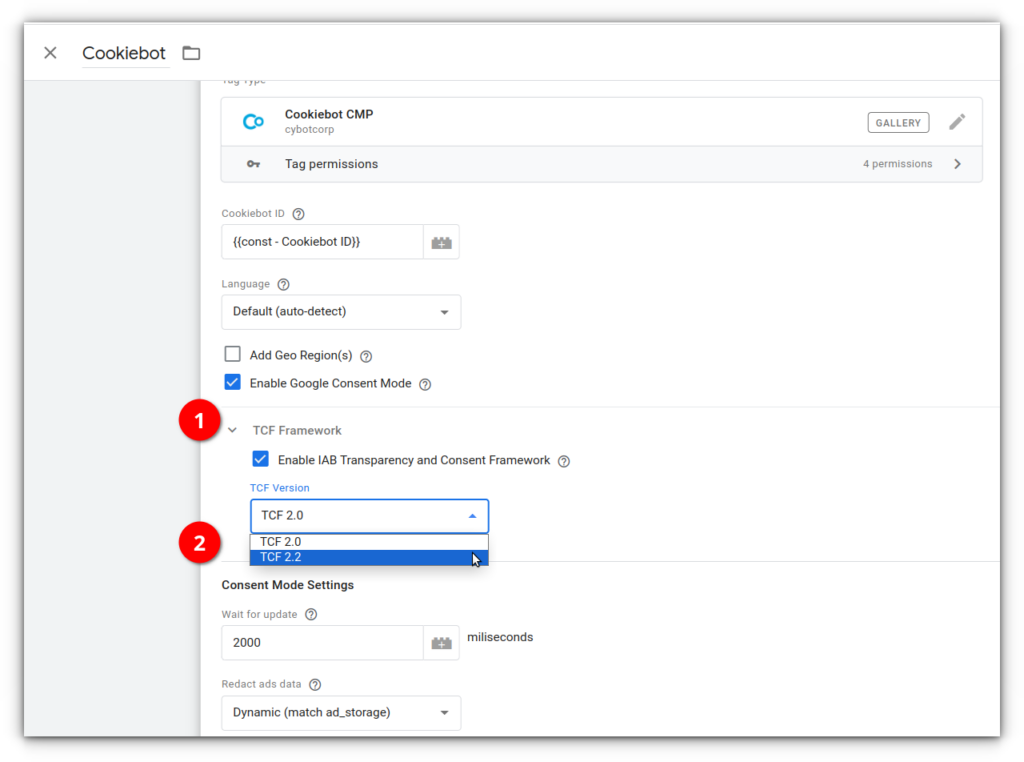
Privacy trigger position
Often, the privacy trigger (the icon that changes user preferences) needs to be moved. Changes are supported (even in the free plan), but it can be easily done with a simple CSS like:
#CookiebotWidget {
left: 120px !important;
bottom: 20px !important;
}
